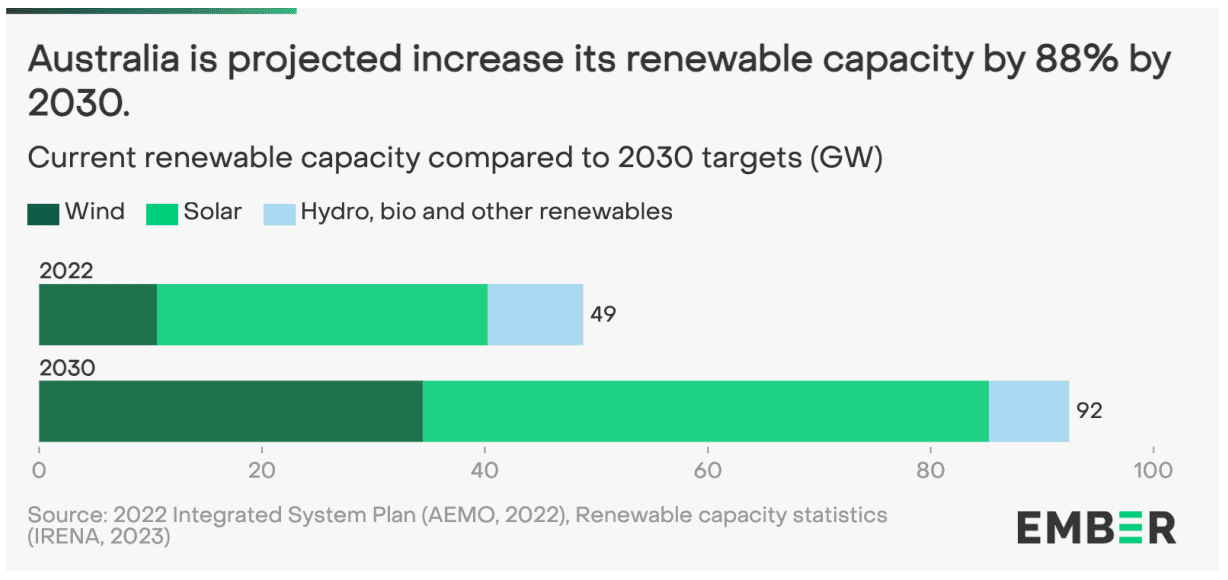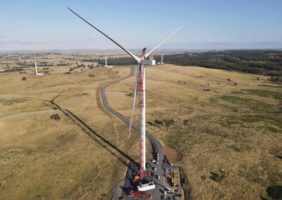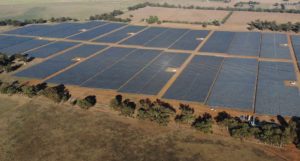The developed world is doing okay when it comes to renewable energy installations, but needs to set more ambitious targets and triple renewable capacity to 11 terawatts by 2030 to meet climate targets, according to energy think tank Ember.
The research group looks at 57 countries and the EU, and says there is so much more development in national pipelines that national targets should be lifted.
“The targets of today are already outdated and should be updated,” said Ember global analyst Dr Katye Altieri.
“Governments have yet to understand the revolution that’s underway with renewables. As we approach COP28, leaders should be confident in supporting a global goal to triple renewables; it is looking more possible than ever to achieve.
“Tripling renewable capacity worldwide is the single biggest action required this decade for the climate.
The question will be whether governments have the ambition to capitalise on the potential “explosion” of wind and solar power, says Ingrid Behrsin, Global Energy Monitor program director for renewables and other power.
She believes governments need to double down rather than be allowed to coast.
Australia tracking well on renewables, could do much better
Australia is one of 22 countries whose development pipelines exceed what they need to install to meet 2030 targets – although the problem is in the actual doing..
Australia has an 82 per cent renewable energy target for 2030, and needs to add at least 5GW of large cale renewables on average every year until 2030 to do that.
“Global Energy Monitor’s data on prospective solar and wind capacity for Australia shows that there is potentially three times more capacity already under construction or announced than its 2030 target, even though it excludes rooftop solar,” it says.

Within Australia, there is less optimism. Organisations such as the Clean Energy Council and even the Australian Energy Market Operator lament speed humps such as a lack of clear policy detail to guide the energy transition.
The Ember assessment, however, does capture more up-to-date details which are behind those worries, such as the fact that only four projects were approved in the June quarter.
The slow-down of Australia’s large-scale renewables sector this year was outlined by data released by the Clean Energy Regulator in September, which showed no new solar projects registered in the first two months of 2023/24 and just 500MW of new capacity reached a final investment decision in the first six months of the year.
Blistering pace
Ember says the renewables boom globally, however, is already outpacing growth planned by governments generally, which aims for an estimated 7.3 terawatts (TW) in 2030, up from 3.4 TW in 2022.
Some countries do have ambitious targets in place.
Ten countries, including India, already aim to triple their renewable capacity. Twelve countries have wind and solar share targets that exceed the global goal of 40 per cent by 2030, including the US. A further 20 countries plan to shift more than 20% of their electricity mix from fossil fuels to renewables by 2030, including South Africa.
“A global energy transition that accelerates global renewable energy capacity to at least 11,000 GW by 2030 is the fastest and most cost-efficient way to build a clean, secure and just future,” says Global Renewables Alliance CEO Bruce Douglas.
“Countries can and must increase their ambition and update their national targets.
“This increased ambition, combined with urgent action on the financing, permitting, grids and supply chains would deliver cleaner electricity systems, access to affordable energy and green jobs for millions of people. On top of that billions of dollars in public and private capital would be unlocked, reducing loss and damage for nature and people wrought by harmful climate change.”









